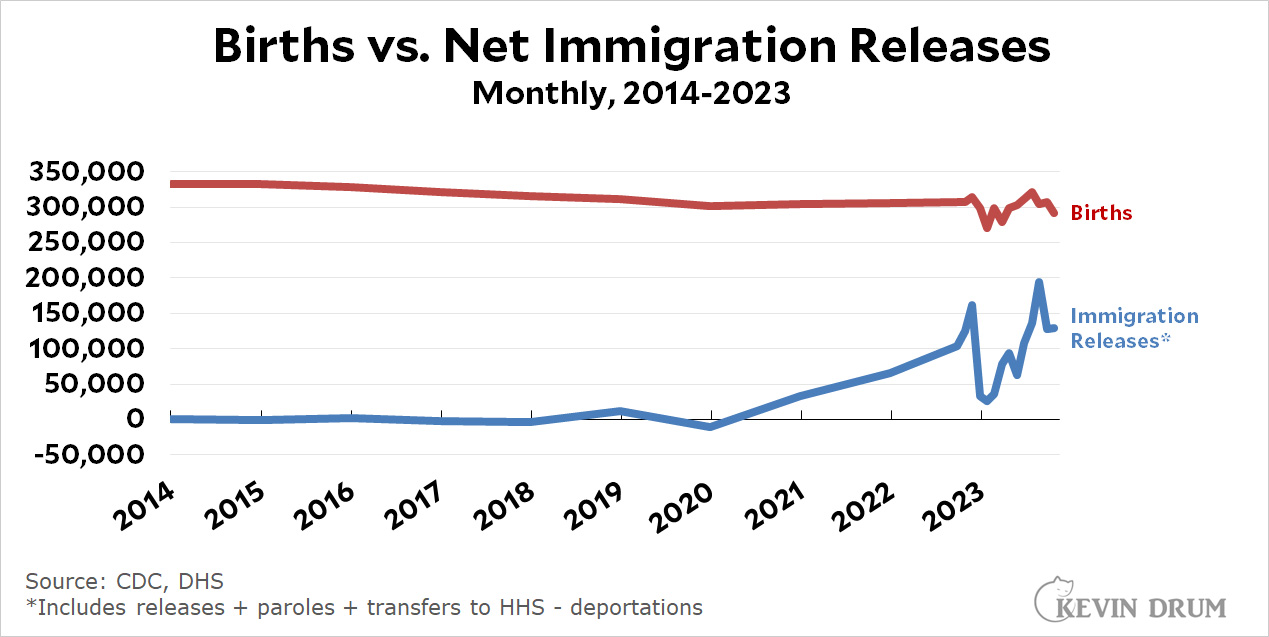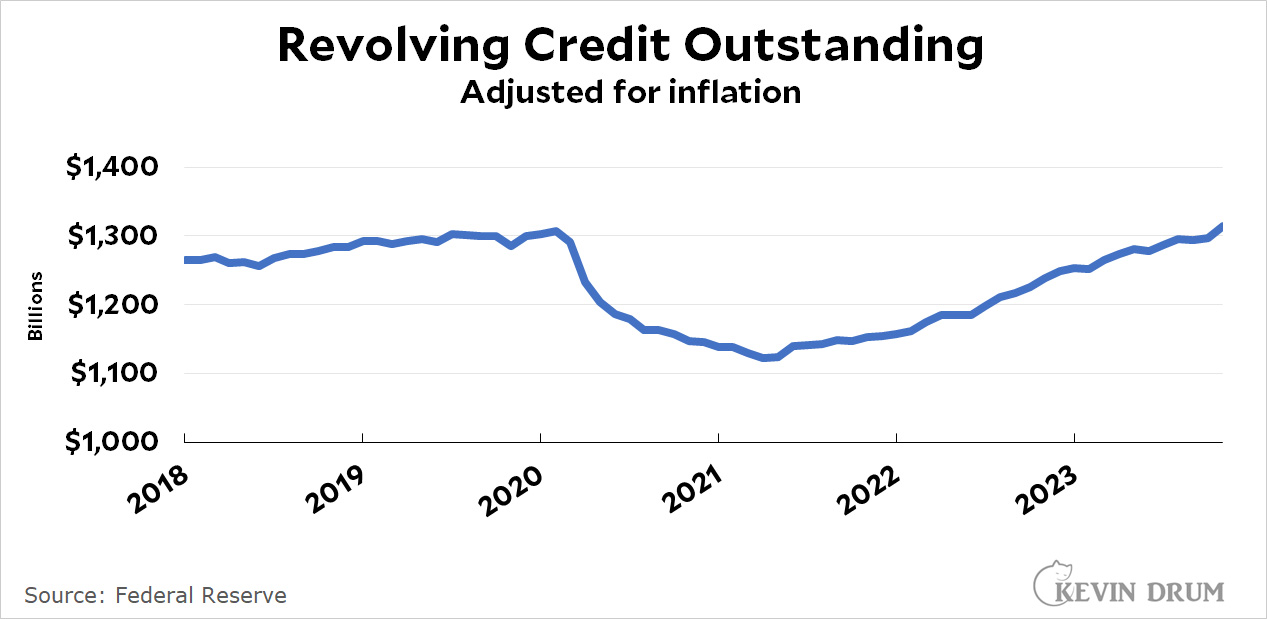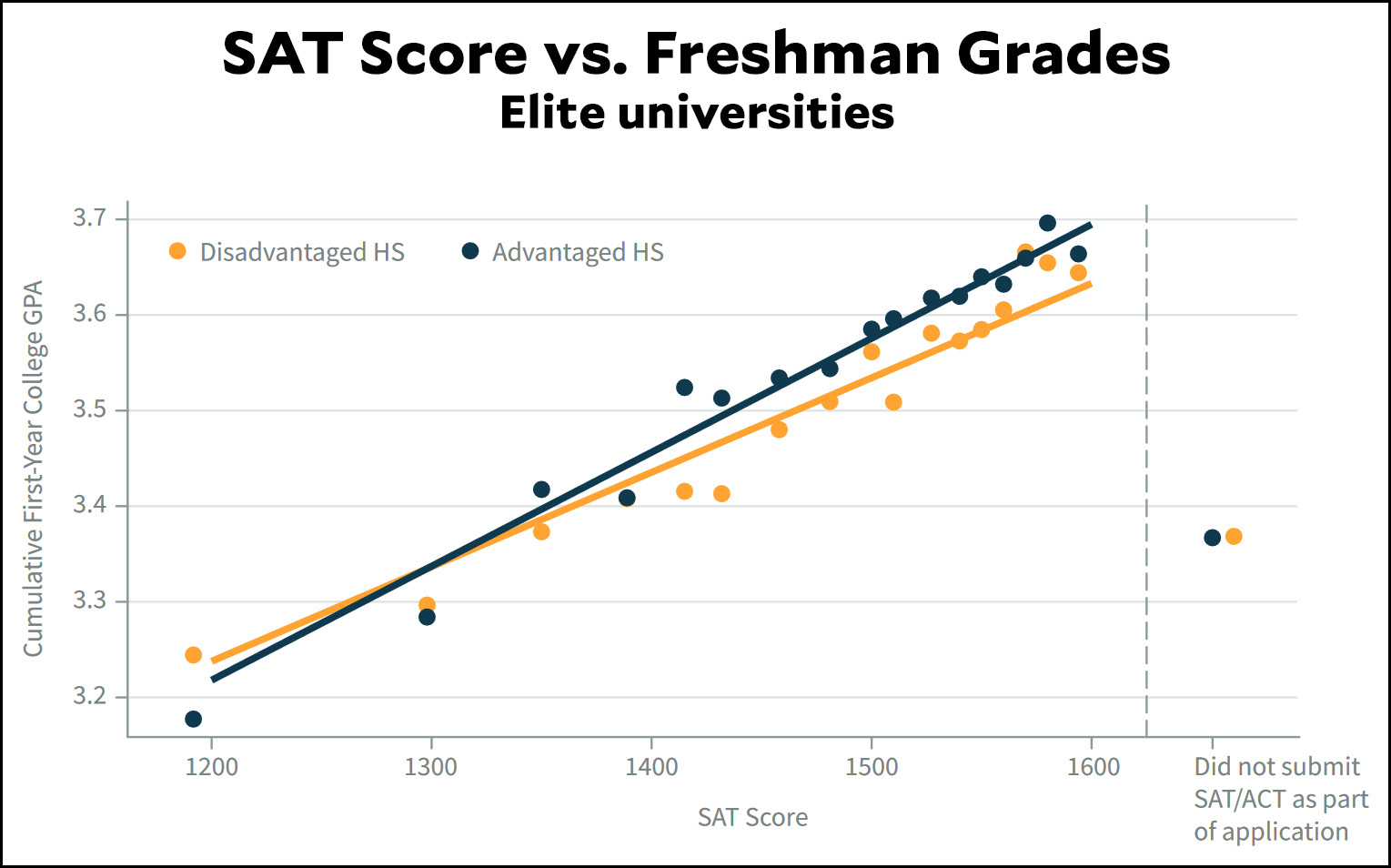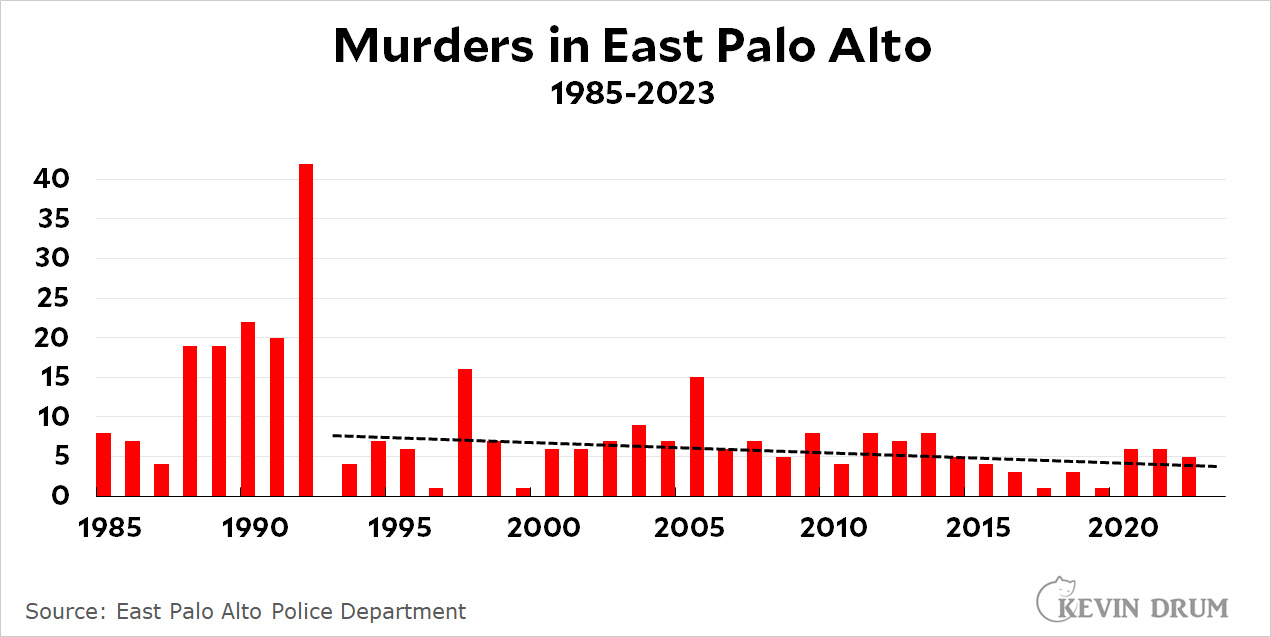This is the Cluny-Sorbonne metro station in Paris. Pretty cool, isn't it?

Cats, charts, and politics

Apparently there's some kind of foofarah over Elon Musk highlighting a tweet that claims more illegal immigrants are coming into the country than there are native births. As near as I can tell, this isn't true using any statistics, including the raw number of border encounters. Here's my best take at a true number:
 Net immigration includes all migrants released by the Border Patrol due to lack of detention space; all CHNV paroles (Cuba, Haiti, Nicaragua, Venezuela); all transfers of children to HHS; minus deportations. It does not include migrants who are either expelled or transferred into ICE custody.
Net immigration includes all migrants released by the Border Patrol due to lack of detention space; all CHNV paroles (Cuba, Haiti, Nicaragua, Venezuela); all transfers of children to HHS; minus deportations. It does not include migrants who are either expelled or transferred into ICE custody.
The numbers in the chart are monthly averages for 2014-2022 and actual monthly figures for 2023.
There are, of course, some number of migrants who cross the border illegally and are never caught. They don't end up anywhere in the statistics, so we don't know how many there are. However, if you added them in it's possible that net illegal inflow could be greater than native births.
Credit card debt rose in November at an (annualized) rate of 17.7%. Holy cow! But here's what that looks like:
 Credit card debt has been rising steadily ever since it recovered from the pandemic crash. It's now back to about where it was in 2019.
Credit card debt has been rising steadily ever since it recovered from the pandemic crash. It's now back to about where it was in 2019.
True, 17.7% is a lot. But the data is pretty volatile. Revolving credit was up 14% in May. It was also up 14% last November and last July. It was up 19% in June of 2021. So the latest number might be a sign of a dangerous rise in consumer debt or it might not. There's no way to know yet.
Last week I went whale watching off the coast of Dana Point. I didn't see any of the fabled killer whales that are supposedly puttering around right now, but we did see some gray whales. The good news is that this was an early sighting and it was a pod of three, so I was fortunate. The bad news is there was no frolicking or leaping about, so I didn't see much aside from a few humps in the water.
But you get to see it anyway! From the top: all three whales surfacing briefly; one of the whales spouting; a whale of a tail.

David Leonhardt writes today about the misguided campaign against using standardized tests like the SAT in college admissions. It's easy for lefties to hate on the SAT, but there was a time when lefties loved the SAT because it was a way of identifying smart kids who didn't necessarily grow up in great neighborhoods or go to great schools:
Administrators at Harvard, who pushed for the creation of the tests, saw them as a way to identify talented students from any background. The administrators believed that these students would go on to strengthen the country’s elite institutions, which were dominated by a narrow group of white Protestants, as Nicholas Lemann explained in “The Big Test,” his history of the SAT.
There may be some level of unfairness in SAT scores, since rich kids can afford tutoring and test prep and that sort of thing. But that turns out to be pretty modest. Other common metrics used for college admissions—high school GPA, recommendation letters, subject tests, strength of curriculum—are far more unfair. They strongly favor elite kids, which is the whole reason the SAT was widely adopted after World War II in the first place.
(It's worth pointing out that this was the era of the GI Bill and the expansion of college admittance broadly. Adoption of the SAT wasn't originally designed to identify more Black or Hispanic kids, it was designed to find poor and working class white kids who previously had neither the money nor the encouragement to get into college.)
And like it or not, tests like the SAT really do have a good track record of predicting success, especially at elite universities. This is from a recent paper that Leonhardt cites:
 As the paper shows, SAT scores are also much more predictive of college grades than high school GPA. Ditto for success after college.
As the paper shows, SAT scores are also much more predictive of college grades than high school GPA. Ditto for success after college.
No university in America (as far as I know) relies solely on SAT scores for admittance. It's one piece of many. But it's a pretty good piece because it is predictive of success and it isn't very biased against poor kids or students of color. Tests don't always produce the results we'd like, but that's usually not because the tests themselves are bad. It's because they reflect a reality that's bad. That's where our focus should be, not on shooting the messenger.
Time offers the following numbers about the Israeli campaign to starve Gaza:
A December report from the Integrated Food Security Phase Classification predicted that by February, all 2 million people in Gaza would face crisis levels of acute food insecurity, with at least one in four households facing famine-like conditions.
....[Colonel Elad Goren] says Israel is supplying 28 million liters (7.4 million gallons) of water daily to Gaza, has let in 126,000 tons of aid since the war started and increased the number of trucks carrying food from around 70 a day before the war to 109 daily this week.
....But Juliette Touma, Director of Communications at the UN Agency for Palestine Refugees (UNRWA), tells TIME that the number of trucks, including commercial goods, going into Gaza has dropped from around 500 every working day since the war began, and there is not enough aid. The U.N. said that in the last week of December, food assistance only reached 8% of targeted people in need.
Needless to say, I don't believe Goren since Israel has consistently lied about this from the very beginning of the war. It's very plain that Israel and Egypt are engaged in a campaign to keep all 2 million Gazans on the brink of starvation. It's a war crime no matter what the circumstances.
This is sadly typical of Israel over the past couple of decades. Even for someone like me, who roughly believes that most of the problems in the Middle East are the fault of Israel's enemies, their response over the years has been so abhorrent that it's hard to retain any sympathy for them. Hamas or no, there's no excuse for displacing nearly the entire population of Gaza, leveling the whole place, and denying decent amounts of food, water, and medical aid to reach civilians.
I don't fault Joe Biden for siding with Israel. As usual with these things, it was a brutal Palestinian attack that started the war. But at this point he needs to do at least the bare minimum to stop Israel's vile tactics. A ceasefire may be the most popular solution on the left, but it's hardly practical since Hamas has made it clear that it won't abide by one. However, stopping military aid unless Israel allows substantially more humanitarian aid to get into Gaza? That's the bare minimum. It's past time for Biden to insist on it.
The Wall Street Journal reports today that office vacancies are at their highest level since records began:
A staggering 19.6% of office space in major U.S. cities wasn’t leased as of the fourth quarter, according to Moody’s Analytics, up from 18.8% a year earlier. That is slightly above the previous records of 19.3% set in 1986 and 1991 and the highest number since at least 1979, which is as far back as Moody’s data go.
Leases are a lagging indicator. They're usually signed on a long-term basis, so even when workers stop coming into the office the space remains under contract for years. Eventually, though, the leases expire and they don't get renewed. That's been happening ever since 2020 and there's no reason to think it won't continue. Evidence suggests that the number of office workers has declined by half since the start of the pandemic, and leased space has nowhere near caught up to that.
As you can see in the chart, unleased space peaked previously in 1986, four years after the end of the Reagan recession—and that recession didn't see nearly the drop in office workers that we've seen in recent years. Even if big companies start requiring more workers to come in, we still have a long way to go before leasing catches up—and in the meantime that's going to be a big drag on the economy.
The LA Times has a story today about the miracle of East Palo Alto:
In 1992, East Palo Alto was dubbed the “murder capital” of the U.S., with 42 murders in its 2.5 square miles — a per capita rate higher than that of any other city of any size. In 2023, according to East Palo Alto Police Department statistics released last week, the turnaround seemed complete: zero homicides.
Law enforcement leaders, residents and city officials point to a complicated mix of circumstances that turned a crime-ridden community into what the mayor now calls “one of the safest places to live in the peninsula.”
That's amazing! How did they do it?
Well, the median income in East Palo Alto is now $103,000, but naturally city officials insist that's not the reason. They always do. The reason must be some set of policies that they themselves have implemented.
But put that aside. I had to read past the jump to finally find out what's going on. Here is a chart of murders in East Palo Alto:
 East Palo Alto had a high murder rate for a few years in the late '80s and that was about it. The very next year after their record 42 homicides they recorded.......4.
East Palo Alto had a high murder rate for a few years in the late '80s and that was about it. The very next year after their record 42 homicides they recorded.......4.
And the trendline since 1993 shows a slow decrease from about 8 murders a year to 4. That's no miracle. That's just East Palo Alto getting richer plus the effects of lead reduction that affected murder rates in every city in the country.
If the city fathers of East Palo Alto want to crow about having zero murders in 2023, that's fine. They deserve a round of applause. But there's no excuse for the Times getting suckered into covering it.
File this in the "dumb laws" folder:
Erica Ingber has something of a dark past when it comes to handwriting: The future elementary school principal got a C-minus in cursive in the fourth grade. But she’s ready to follow the curvy ups and downs of a new California law that requires the teaching of cursive writing, which has been cast aside as obsolete in the digital age.
But cursive is making a comeback amid concerns that learning to use a keyboard had superseded handwriting skills that are important for intellectual development — and also that a new generation of students could not write or read the flowing words of historical documents, old letters and family recipes.
I mean, I don't really care much whether school children learn to use cursive, but a state law? In order to make sure that kids will one day be able to read old family recipes? Come on.
Although I have to admit that I wonder how people sign their names if they never learn cursive. I suppose we'll find out pretty soon as the first cohort of kids who weren't taught cursive grows up.